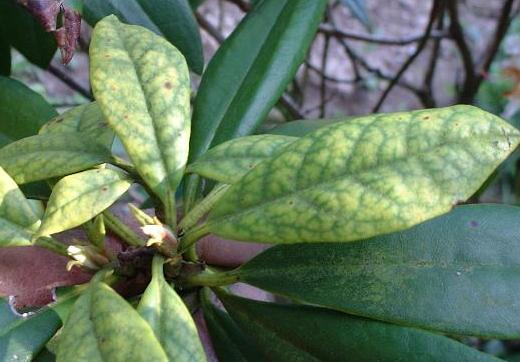Acidity or alkalinity of the soil is determined by the mineral content. It is described scientifically as the pH value, this is a measure of hydrogen (H+) ions available. An acidic soil has a low pH, neutral is pH 7 and alkaline is greater than pH 7.
Most plants grow best at a pH of 6.5 as most plant nutrients are available for uptake by the roots at this pH level - the pH range of most soils is between 5.5 and 7.5.
Water molecules (H2O) dissociate to positive H+ and negative OH ¯ ions and these are in equal amounts at pH 7, the presence of other ions effect this balance creating more or less free hydrogen ions and consequently the pH value rises or falls. Distilled water has only H+ and OH ¯ ions in equal amounts so has a pH of 7.
The presence of calcium ions (Ca++) is usually what determines the pH of soil, as they displace hydrogen ions in solution. A soil particle with a full amount of H+ ions is weakly acid, but the presence of calcium ions makes it neutral or alkaline. Calcium is leached away so soils have a tendency to become acidic and this occurs faster in sandy soils. The humus coating on soil particles and the adherent properties of clay particles both hang on to calcium and reduce the leaching.It is fairly easy to make your soil more alkaline by the addition of lime; to raise the pH by one point requires about 4.5 kg of lime to 9 square metres. Making it more acidic, and maintaining it that way is more difficult. You could try substituting sulphur for lime at the above rate. If your soil is derived from chalk then there will be a constant supply of calcium which will keep it alkaline. The addition of plenty of organic matter will improve the situation slightly. Applying Ammonium Sulphate will have an short-lived acidifying effect and is used to produce the bright blue Hyderangea flowers.
Trying to reduce the pH chemically, eg. adding sulphur or iron, could introduce a whole new set of interactions which could be toxic to the plants. It is usually best to grow acid-loving plants in specially prepared raised beds or containers rather than trying to change the native soil. Acid-loving plants, eg. rhododendrons, usually demonstrate their dislike of alkaline soil by yellowing of their leaves.This happens because the calcium present displaces free iron (Fe++) which is essential for making chlorophyll, the green matter in leaves, involved in photosynthesis - known as iron deficient chlorosis. It can be counteracted with sequestered iron which is applied to the foliage, thus bypassing the roots.
Rhododendron leaves showing signs of chlorosis or yellowing between the veinsWhat type of soil have you got?
To find out the pH and structure of your soil take about fifteen to twenty spoonful-sized samples from all over the area at about 150mm depths. Mix them all together and send away for analysis; or small DIY kits can be purchased at garden centres. Gardening from Which?, part of the Consumers Association, provide a service for their readers.
For a rough idea check out the neighbourhood to see if rhododendrons are thriving, in acidic soil the hydrangea blooms should be blue (not always accurate if an acidifier has been used to produce this effect) - in alkaline soil they will be pink. A normally acidic or neutral soil can be made alkaline if it contains concrete rubble, or the run-off water from a concrete surface or wall will contain varying amounts of calcium depending on age. Also on new-build developments most of the soil is removed and sold off at the start of the process, then usually different soil is brought in at the end when the building is finished. Therefore this usually poor quality soil can have varying properties to the surrounding area and from garden to garden.
